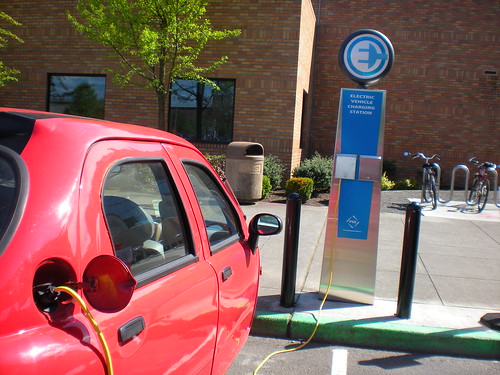‘Cash for clunkers’ program may end today; House seeks $2B more cash to continue the program
(Source: AP via Yahoo; Freep & Photo Courtesy: TOBY TALBOT/Associated Press via Free)
The Obama administration promised on Friday that the financially strapped “cash for clunkers” program will be good at least through the day.
Less than four days after launching a popular cash-for-clunkers program, the Obama administration warned Congress the plan already had burned through its $950-million budget, setting off a rush for more money while leaving thousands of dealers and consumers in the lurch.
A White House official told the Free Press late Thursday that all valid deals made under the program so far would be honored, saying it had not been suspended. But administration sources could not say what car buyers hoping to trade their clunker for a new vehicle should do today.
The House is set to adjourn today for a monthlong recess, but Michigan lawmakers and administration officials were pushing for an emergency infusion of cash today. A spokesman for House Speaker Nancy Pelosi said any request would be “quickly reviewed.”
Sen. Carl Levin, D-Mich., said he got the word from Transportation Secretary Ray LaHood as members of the Ohio and Michigancongressional delegations huddled on Capitol Hill to discuss ways to keep the popular program going.
“Beyond Friday,” Levin said, “depends on whether the administration can find some money.”
One participant in the meeting said they were examining possible funding sources and whether there were any glitches in the computer system. The participant, who spoke on condition of anonymity because of the sensitivity of the talk, said they were also studying how many dealers had enrolled in the system.
Through Wednesday afternoon, more than 23,000 dealer franchises were participating, according to the National Highway Traffic Safety Administration.
The administration dispatched Brian Deese, a top adviser to the Treasury’s auto task force, to the Hill meeting.
Sen. Debbie Stabenow, D-Mich., said about 40,000 new vehicles had been purchased through the program but dealers estimate another 200,000 vehicles have been sold in transactions that have not yet been completed through the program.
Earl Stewart, who owns a Toyota dealership in North Palm Beach, Fla., said the changing messages on the program has created confusion among his customers and his staff. Stewart’s accounting department also could only enter about a dozen of the 47 sales he made into the government Web site set up to handle the transactions, leaving him wondering if he will get refunded for the remaining vouchers.
Click here to read the entire article.
Breaking News Update:
The Detroit Free Press reports that the U.S. House will vote on $2 billion in additional funding for the cash-for-clunkers program this afternoon.
Michigan lawmakers huddled in the Capitol this morning with a White House official discussing ways to get the cash-for-clunkers program under control. The program is still under way, they said.
While the Obama administration said the plan was not suspended, it doesn’t know how many deals have been made under the program and whether the $950 million available to the plan is enough to cover the deals already made.
The administration may consider whether money from the economic stimulus plan can be diverted to the program.
Click here to read the update.








